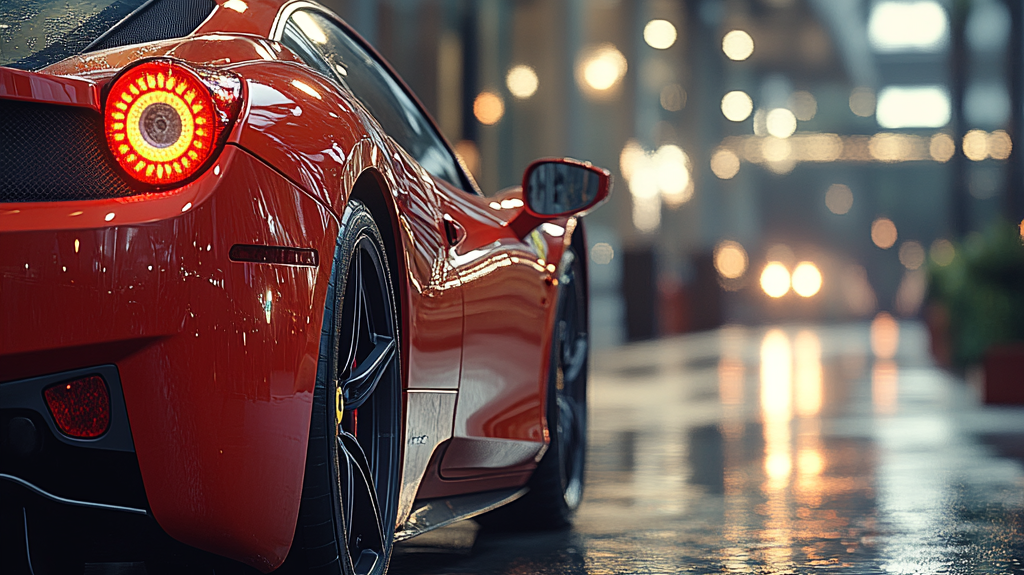Dubai Storm Today: A Car Person’s View From the Floodline
I’ve driven in Dubai long enough to know the city loves extremes—power, polish, and supercars parked like sculpture. But on April 16, 2024, the extreme was water. Relentless, brown, city-stopping water. Over 24 hours, heavy rain swamped roads I’ve hammered at dawn, turned underpasses into lagoons, and left everything from budget hatchbacks to V12 royalty stranded like beached yachts. I saw videos, sure, but it was the smell—wet sand and hot brakes—that hit hardest when I stepped out. This wasn’t a shower. It was a system-level stress test for a city built to run hot and fast.
Numbers? Around 3.7 inches fell in parts of the UAE, with some pockets pushing 5.5. That’s months of rain in a day. No surprise the airport stuttered, diversions piled up, and WhatsApp groups became a patchwork of warnings and “anyone got a tow strap?” chaos. The surreal bit was seeing roads I use for photo shoots look like canal backdrops. I’ll be honest—Dubai’s resilience is real, but even the best drainage has limits when the sky won’t quit.
Dubai Storm Today: What Floodwater Really Does to Cars
Everyone talks about engines and electrics, but it’s the interiors that tell the story the morning after. I climbed into a friend’s supposedly “dry” SUV the next day—squish. Carpets were saturated, and that’s where problems start. Moisture creeps into underlay foam, wiring harnesses, seat modules, even the adhesive under sound deadening. That lingering damp? It’s mold waiting to happen, and it kills resale faster than a mystery rattle.
Owners I spoke to had one common regret: “We thought the water was shallow.” For reference, the average crossover has around 7–8 inches of ground clearance. That’s barely ankle-deep. Hit anything above the sill line and it’s a wading contest you didn’t sign up for.
Protecting Your Cabin: Why Floor Mats Matter More Than You Think
Floor mats aren’t glamorous. I get it. But after a flood, they’re the front-line defense between a bad day and a biohazard. Good mats buy you time. They trap grit and water, keep your carpet from soaking like a sponge, and make cleanup a “hose-and-hang” job instead of a full interior strip.
After storms like this, I always tell owners: upgrade the mats first, then look at door seals and trunk liners. If you want something built for abuse and still nice enough for a valet handoff, www.autowin.com does a surprisingly premium range that fits properly and doesn’t curl at the edges when it gets hot—or wet.
- Raised edges to contain water and sand
- Non-slip backing so they stay put during soggy traffic slogs
- Easy rinse-off materials (no funky carpet smell a week later)
- Custom-fit options for supercars, SUVs, and everything in between
Quick tip: If you’ve driven through floodwater, pull the mats immediately, blot (don’t rub) the carpets, and run the AC on heat with recirculation. A cheap moisture meter from a hardware store will save you guessing later.
Dubai Storm Today: The City’s Response, Seen From the Driver’s Seat
Once the clouds cleared, crews were out fast. Pumps. Tankers. Diversions. You could see the muscle memory from previous storms. But I also saw the weak points—underpasses that trap water, mall car parks with poor runoff, neighborhoods where drains backed up. The airport felt it too; even international hubs cough when the weather goes off-script.
Was Dubai prepared? Yes and no. You don’t build a metropolis in the desert expecting an inland monsoon, but climate’s changing the script. This storm felt like a test paper for the next decade—more smart drainage, faster comms, better public awareness on “how deep is too deep” for your car.
Verifying the Viral: Separating Real Flood Footage from Clickbait
When timelines flood with videos, some of it’s fresh, some recycled, some flat-out wrong. I saw clips labeled “today” that were clearly years old. In a crisis, stick to trusted sources like the National Center of Meteorology and official Dubai Police feeds. It’s not just about accuracy—it’s about knowing which roads to avoid when you’re literally deciding between left and “maybe don’t.”
Weather Math: Why This Much Rain Hit So Hard
Meteorologists pointed to a cocktail of high moisture, converging winds, and a stubborn low-pressure system. In a region built for heat dissipation, not water absorption, that’s a problem. Climate chatter isn’t background noise anymore; it’s the reason your G-Class turned amphibious on Al Khail. Expect more “rare” events. Plan your car life accordingly.
Dubai Storm Today: Safe Wading Guide (And When to Turn Around)
| Vehicle Type | Typical Ground Clearance | Suggested Max Water Depth | Notes |
|---|---|---|---|
| Small hatch/sedan | 5–6 in (127–152 mm) | 3–4 in (75–100 mm) | Water over the sill risks cabin flooding |
| Crossover/SUV (unibody) | 7–8 in (178–203 mm) | 6 in (150 mm) | Watch intake height; slow and steady |
| Body-on-frame SUV/pickup | 9–11 in (229–279 mm) | 10–12 in (250–300 mm) | Electrics and diff breathers are still vulnerable |
| Off-road specialist | Varies | Up to 27–35 in (700–900 mm)* | *Factory-rated examples: G-Class ~27.6 in; Defender ~35.4 in |
Rule one: if you can’t see the road markings or the curb, don’t chance it. Rule two: one car at a time through water; bow waves from others can swamp you.
Did you know? Hydrolocking—when water enters the engine—can happen at surprisingly low speeds if the intake is low or you plow into standing water. It’s one of the quickest ways to turn a perfectly good engine into sculpture.
After the Water: Real-World Recovery Steps
- Don’t start a water-exposed car until a tech inspects it—spinning a wet starter or ECU can compound the damage.
- Pull mats and underfloor storage, pop sill covers, and ventilate. Silica gel packs help. So do cheap fans.
- Check seat rails and wiring looms for corrosion within 48 hours. A small inconvenience today beats chasing electrical gremlins for months.
- Document everything for insurance. Photos, timestamps, location. Boring? Yes. Essential? Also yes.
Dubai Storm Today: Floor Mats That Can Take a Beating
Look, I love exotica as much as the next magazine hack, but the thing that saves interiors during a deluge is a boring hero: a tough, well-fitted mat set. The good ones have channels that trap water, lip edges that keep it corralled, and a material you can pressure-wash without it turning furry. AutoWin’s lineup hits those notes and still looks sharp enough for a night at DIFC.
So, What Did We Learn?
Dubai Storm Today reminded us that even in a city built for speed and shine, water dictates terms. Drive smarter, wade shallower, and kit your car like you expect the unexpected. Start with the basics—visibility, route planning, and yes, floor mats that won’t surrender at the first splash. I wasn’t sure I’d ever be the “buy the mats” guy, but after a day watching interiors go soft and sour, I’m all in.
FAQ: Driving and Car Care During Dubai Storm Today
Is it safe to drive through standing water in Dubai?
If you can’t see the curb or lane markings, turn around. For most crossovers, anything above 6 inches is risky.
My carpets got wet—what’s the first move?
Remove mats, blot the carpets, run heat with recirculation, and use fans. Get electrics checked before you restart.
Will insurance cover flood damage?
Comprehensive policies often do, but documentation is everything. Photos, water depth estimates, and location help.
Do premium floor mats really help?
They won’t stop a flood, but they contain water and grit, speed up drying, and protect factory carpet—big difference in resale.
How do I judge water depth quickly?
Use parked cars as reference, look for submerged curbs, and watch other vehicles’ bow waves. When in doubt, don’t go.




























